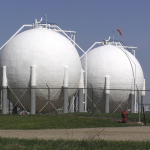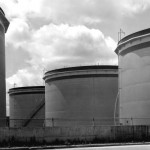 Natural gas futures fell to the lowest since August as weather forecasting models continued to predict above-average temperatures in eastern U.S. through the middle of November, limiting the power-station fuels demand prospects.
Natural gas futures fell to the lowest since August as weather forecasting models continued to predict above-average temperatures in eastern U.S. through the middle of November, limiting the power-station fuels demand prospects.
On the New York Mercantile Exchange, natural gas futures for settlement in December fell by 1.06% to $3.409 per million British thermal units by 10:37 GMT. Prices plunged to a session low of $3.404, the weakest level since August 18, while days high was touched at $3.459 per mBtu. The energy source fell by more than 2% on Monday, a fourth consecutive daily retreat, and extended its weekly decline to 3.1% after losing 7.2% in the last three weeks.
Natural gas extended losses as updated weather forecasts continued to call for above-usual temperatures in key U.S. consuming areas, limiting demand prospects for the power-plant fuel prior to the peak winter season. According to Commodity Weather Group LLC in Bethesda, Maryland, readings in the eastern half of the U.S. will be average or above-average between November 9 and November 19. According to AccuWeather Inc., temperatures in New York on November 17 might bottom at 43 degrees Fahrenheit, 2 above usual, while the low in Chicago may be 43 degrees Fahrenheit, 9 above normal.
When cool weather is expected, natural gas surges as increased electricity demand to power air-conditioning calls for more supply of the fuel, which is used for a quarter of U.S. electricity generation. Average and above-average readings during the winter season have the opposite effect. Consumption usually picks up from November through March. According to the Energy Information Administration, power generation accounts for 32% of U.S. gas demand and 49% of U.S. households use the energy source for heating.
Market players will also be keeping a close watch to this week’s U.S. inventories data provided by the Energy Information Administration. Early injections estimates for last week’s build range between 33 billion and 45 billion cubic feet, compared to the five-year average gain of 36 billion and last year’s 27 billion cubic feet increase during the comparable week.
The Energy Information Administration said last Thursday that U.S. natural gas stockpiles added 38 billion cubic feet in the week ended October 25, well below the five-year average gain of 57 billion cubic feet and last year’s 66 billion increase during the comparable period. Total gas held in underground U.S. storage hubs now equaled 3.779 trillion cubic feet, 3.1% below last year’s 3.899 trillion. The surplus over the five-year average level of supplies narrowed by 0.5% to 1.6%. Last week’s smaller-than-the-average build however couldn’t shift the energy source’s downward momentum and only limited losses.





